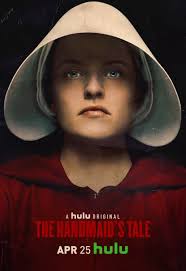The Handmaid’s Tale by Margaret Atwood, Canada, 1985
 Beautifully written, this horrifying glimpse of what the future could hold is a definite page turner. Nothing in the book is impossible; everything that happens has already been experienced, to some degree, somewhere around the world, and it is this that makes the book so frightening. Atwood’s Gilead is not fantasy, it is simply taking the reality of our times to an obvious and likely conclusion.
Beautifully written, this horrifying glimpse of what the future could hold is a definite page turner. Nothing in the book is impossible; everything that happens has already been experienced, to some degree, somewhere around the world, and it is this that makes the book so frightening. Atwood’s Gilead is not fantasy, it is simply taking the reality of our times to an obvious and likely conclusion.
It is interesting to note that when Atwood wrote the book, except for a group of religious right-wingers in USA talking about the necessity of subordinating women, the possibility of anything resembling Gilead seemed unlikely. Nevertheless, China’s one-child policy and the subjugation of people (not only women) in places behind the Iron Curtain should, even then , have made this ‘unlikely’ seem ‘more likely’.
The Handmaid’s Tale describes a society in the not-too-far-distant future where fertility rates have plumetted (as a result of, among other things, pollution, radiation, the Pill) and fertile women have been herded together to be handed over to well-heeled, infertile couples as Handmaids. The Handmaid’s reality is to be impregnated by the man of the house and, hopefully, to deliver a healthy child. After the birth, the Handmaid is then moved to a new household where she begins the process all over again. If, after three attempts to produce a child, she is considered a failure she will most probably be sent to the Colonies (to clean up after radiation spills – a definite death sentence).
Offred, the main character in the book, has, like the other Handmaids, been given her name ito connect her with the house where she is now living (the property of Fred). The fact that we do not know Offred’s real name removes her from her rightful position of ‘she’ to the subjugated and degraded position of ‘it’. She is merely a vessel or a tool; she has no human worth beyond procreation.
Through flashbacks, we learn a little about Offred’s past, and we know that she was married and that she had a child. While desperately missing her family and while doing her best not ‘to let the bastards grind her down’, she begins a dangerous affair with the chauffeur . Her need to be held and loved for her own sake greatly outweighs the danger with which she is flirting.
Although much of Atwood’s book is to be found replicated in the present television series, the ending is very different and much is left up to the imagination of the reader. The television series has run with several incidents in the book and has, therefore, created new stories and new possibilities. The reader’s imagination is no longer of any concern.
Even if you have seen the series I suggest that you read the book – you definitely will not regret it.
The image of Margaret Atwood is from Poetry Foundation
The image from the television series is from imdb